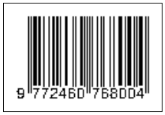Klasifikasi Teh Hijau dan Teh Hitam Tambi-Pagilaran dengan Metode Principal Component Analysis (PCA) Menggunakan E-Nose
Inca Inca(1*), Triyogatama Wahyu Widodo(2), Danang Lelono(3)
(1)
(2) Departemen Ilmu Komputer dan Elektronika, FMIPA UGM, Yogyakarta
(3) Departemen Ilmu Komputer dan Elektronika, FMIPA UGM, Yogyakarta
(*) Corresponding Author
Abstract
This research aims to classification of samples of green tea and black tea originated from different planting sites, Tambi and Pagilaran. Samples of green tea and black tea; quality I (BOP), quality II (BP), quality III (Bohea) were each collected from Tambi and Pagilaran to analyze the charasteristic of both sample from both sites. Measurements of tea samples were performed using a dynamic e-nose device based on a MOS gas sensor, with a maximum set point temperature of 40ºC, flushing 300 seconds, collecting 120 seconds, and purging 80 seconds for 10 cycles repeatedly. The resulting sensor response is then processed using the difference method for baseline manipulation. Characteristic of extraction process on the sensor response results is carried out in three methods; relative, fractional change, and integral. Matrix data of the feature extraction results was reduced using the PCA method by mapping the aroma patterns of each sample using 2-PCA components. The PCA reduction results in integral feature extraction showed the largest percentage of cumulative variance in classifying green tea sample data by 97% and black tea by 100%. The large percentage value of cumulative variance indicates PCA can differentiate samples of green tea and black tea from Tambi and Pagilaran well.
Keywords
Full Text:
PDFReferences
[1] D. Rohdiana, “Teh: Proses, Karakteristik, & Komponen Fungsionalnya,” 2015. . Available:https://www.researchgate.net/publication/286460235_Teh_Proses_Karakteristik_Komponen_Fungsionalnya. [Accessed: 25-Jan-2017].
[2] N. Supriatiningsih, T. Ersam, M. Rivai, F. Kurniawan, J. Kimia, and J. T. Elektro, “Pengenalan Pola Respon Aroma Teh denga Menggunakan Electronic Nose,” 2011, pp. 978–979.Available://www.snkpk.fkip.uns.ac.id%2Fwp content%2Fuploads%2F2016%2F04%2FC-07_PENGENALAN-POLA-RESPON-AROMA-TEH-DENGAN-MENGGUNAKAN-ELECTRONIC-NOSE_NininSupriatiningsih.pdf&usg=AOvVaw1qQOiC46-hgNOUuneQt8QV. [Accessed: 08-Mar-2017].
[3] R. Dutta, E. L. Hinesl, J. W. Gardner, K. R. Kashwan, and M. Bhuyan, “Determination of Tea quality by Using A Neural Network Based Electronic Nose,” pp. 404–409, 2012. Available: http://ieeexplore.ieee.org/document/1223380/.[Accessed: 03-Oct-2017]
[4] Ghufron, “Pengembangan Electronic Nose Berbasis Larik Sensor Gas yang Dikombinasi dengan Principal Component Analysis (PCA) Untuk Klasifikasi Ikan Berformalin,” Universitas Gadjah Mada, 2013.
[5] A. Andika, “Klasifikasi Aroma Jahe Berdasarkan Electronic Nose dengan Metode Principal Component Analysis,” Universitas Gadjah Mada, 2015. Available: http://etd.repository.ugm.ac.id/index.php?mod=penelitian_detail&sub=PenelitianDetail&act=view&typ=html&buku_id=84018&obyek_id=4. [Accessed: 20-Aug-2016]
[6] D. Lelono, K. Triyana, S. Hartati, and J. E. Istiyanto, “Classification of Indonesia black teas based on quality by using electronic nose and principal component analysis,” 2016, p. 20003.
[7] D. Lelono, “Pengembangan Instrumentasi Sistem Electronic Nose Untuk Uji Teh Hitam Lokal,” Universitas Gadjah Mada, 2017. Available: http://aip.scitation.org/doi/abs/10.1063/1.4958468. [Accessed: 03-Oct-2017].
[8] S. Baskara, D. Lelono, and T. W. Widodo, “Pengembangan Hidung Elektronik untuk Klasifikasi Mutu Minyak Goreng dengan Metode Principal Component Analysis,” IJEIS (Indonesian J. Electron. Instrum. Syst., vol. 6, no. 2, p. 221, Oct. 2016 [Online]. Available: https://jurnal.ugm.ac.id/ijeis/article/view/15347. [Accessed: 30-May-2017]
[9] H. Nuradi, “Perbandingan Beberapa Metode Ekstraksi Ciri Teh Pada Electronic Nose,” Universitas Gadjah Mada, 2015. Available: http://etd.repository.ugm.ac.id/index.php?mod=penelitian_detail&sub=PenelitianDetail&act=view&typ=html&buku_id=90072&obyek_id=4 [Accessed: 20-Aug-2016]
[10] M. Megantoro, “Deteksi Berbagai Jenis Teh Menggunakan Electronic Nose Dengan Algorita K-Nearest Neighbors,” Universitas Gadjah Mada, 2015. Available: http://etd.repository.ugm.ac.id/index.php?mod=penelitian_detail&sub=PenelitianDetail&act=view&typ=html&buku_id=93568&obyek_id=4. [Accessed: 08-Jul-2017]
[11] W. N. Afiffaroh, “Variasi Debit Alira Terhadap Respon Aroma Teh Hitam Berbasis Electronic Nose,” Universitas Gadjah Mada, 2017.
Article Metrics
Refbacks
- There are currently no refbacks.
Copyright (c) 2017 IJEIS (Indonesian Journal of Electronics and Instrumentation Systems)

This work is licensed under a Creative Commons Attribution-ShareAlike 4.0 International License.
View My Stats1







